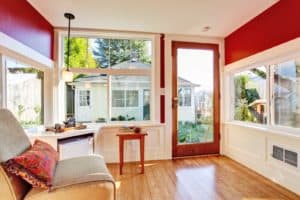To Cater To Millennial Renters, Offer Co-Living, Co-Working Spaces

To cater to that kind of renting philosophy, buildings in highly coveted rental markets are being redesigned, repositioned and rebranded with Millennials in mind. Example: Philadelphia’s 1 Brown, an almost 100-year-old industrial structure transformed into a luxury apartment building emphasizing fitness, healthy living and a sense of community.
Financier, real estate developer and commercial real estate investor Eli Verschleiser of Multi Capital LLC has witnessed the phenomenon up close as he repositions 1 Brown.
“One of the driving forces behind an increased interest in co-living and using communal spaces is younger renters who move to a new city and are looking to meet people and connect,” he says. “To be able to live in the cities most attractive to them for culture, job opportunities and more, many Millennials will have to be willing to sacrifice in order to make an economical rental decision. For many, co-living is a matter of necessity as much as it is a personal preference.”
Communal feel
Another reason the trend continues growing is that many Millennial renters experience the communal feel of co-working spaces in their workplaces, Verschleiser says.
He notes the number of enterprise companies using WeWork’s co-working spaces grew by 90% from June 2016 to June 2017. Startups and smaller companies have been the leading users of this kind of work environment. But open offices that spur collaboration are becoming the norm for many of corporate America’s larger companies.
“For young renters communal amenities like a fitness center or office space are also attractive because of the time-saving component,” Verschleiser says. “Being able to run errands and pursue hobbies all within the comfort of your building helps Millennials save time and money. For example, a professional studying for an MBA or another form of higher education may not feel as comfortable working within [his or her] apartment, as this is somewhere they go to relax. Having an office or communal work space in their building gives them an outlet to get work done in peace.”
Millennials and Generation Z
Whether Millennials will continue being agreeable to sacrificing private in favor of public space is up for debate.
Verschleiser notes the 2018 Deloitte Millennial Survey found 43% of Millennials envision leaving their jobs within two years, and only 28% plan to stay beyond five years. This finding seems in line with a tendency toward quick shifts in commitments, he says.
“With that in mind, I think with maturity, marriage and family commitments, private space will once again become their preference,” he adds.
Verschleiser believes the cohort behind Millennials, Generation Z, could also be drawn to co-living spaces out of necessity, given the need to pay off student loans while they seek employment in high-cost cities.
But another factor may leave them less inclined to follow their older brethren.
“Most Millennials grew up with some form of technology, whether it was a computer or later in their adolescence a smart phone,” Verschleiser says. “Still, there was a time when they were not attached to a screen. Generation Z has been digitally literate from a very young age. They very well may be entertained by their technology and connections online, and less interested in socializing and working together in person.”
Millennials and Generation Z
Whether Millennials will continue being agreeable to sacrificing private in favor of public space is up for debate.
Verschleiser notes the 2018 Deloitte Millennial Survey found 43% of Millennials envision leaving their jobs within two years, and only 28% plan to stay beyond five years. This finding seems in line with a tendency toward quick shifts in commitments, he says.
“With that in mind, I think with maturity, marriage and family commitments, private space will once again become their preference,” he adds.
Verschleiser believes the cohort behind Millennials, Generation Z, could also be drawn to co-living spaces out of necessity, given the need to pay off student loans while they seek employment in high-cost cities.
But another factor may leave them less inclined to follow their older brethren.
“Most Millennials grew up with some form of technology, whether it was a computer or later in their adolescence a smart phone,” Verschleiser says. “Still, there was a time when they were not attached to a screen. Generation Z has been digitally literate from a very young age. They very well may be entertained by their technology and connections online, and less interested in socializing and working together in person.”
Source: forbes.com















 Accessibility
Accessibility